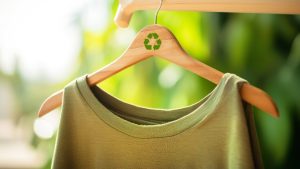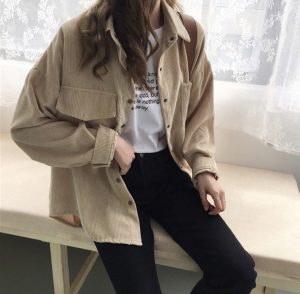“Eco-Friendly Clothing Production: Ethical Practices and Responsible Manufacturing”

Title: Eco-Friendly Clothing Production: Ethical Practices and Responsible Manufacturing
As global awareness of environmental issues continues to grow, the fashion industry is increasingly shifting towards eco-friendly clothing production. With a focus on ethical practices and responsible manufacturing, sustainable fashion brands are leading the way in reducing environmental impact and promoting social responsibility. Let’s delve into the key aspects of eco-friendly clothing production:
1. **Sustainable Materials**: Eco-friendly clothing production begins with the use of sustainable materials that have minimal environmental impact. This includes organic cotton, which is grown without the use of synthetic pesticides and fertilizers, reducing soil contamination and water consumption. Other sustainable materials include bamboo, hemp, linen, and Tencel® lyocell, which are derived from renewable resources and require fewer chemicals and water to produce compared to conventional fabrics. Recycled materials, such as recycled polyester and nylon, offer a sustainable alternative to virgin materials by reducing waste and conserving resources.
2. **Ethical Sourcing and Supply Chains**: Ethical clothing production involves ensuring fair labor practices and transparency throughout the supply chain. Sustainable fashion brands prioritize working with suppliers and manufacturers that adhere to internationally recognized labor standards, such as those outlined by the International Labour Organization (ILO) and the Fair Wear Foundation (FWF). This includes providing fair wages, safe working conditions, and respecting the rights of workers to organize and bargain collectively. Transparent supply chains allow consumers to trace the journey of their garments from raw materials to finished products, ensuring accountability and ethical sourcing practices.
3. **Reduced Environmental Impact**: Eco-friendly clothing production aims to minimize environmental impact at every stage of the manufacturing process. This includes implementing eco-friendly production techniques such as low-water dyeing, which reduces water consumption and pollution, and using energy-efficient manufacturing processes to minimize greenhouse gas emissions. Sustainable brands also prioritize waste reduction and recycling by repurposing fabric scraps, reducing packaging waste, and offering take-back programs for old garments.
4. **Local Production and Artisanal Craftsmanship**: Supporting local production and artisanal craftsmanship is another key aspect of eco-friendly clothing production. By producing garments locally, brands can reduce carbon emissions associated with transportation and support local economies and communities. Artisanal craftsmanship ensures high-quality, long-lasting garments that are made with care and attention to detail, promoting a culture of sustainability and craftsmanship.
5. **Certifications and Standards**: Eco-friendly clothing production is often verified through third-party certifications and standards that assess environmental and social performance. Certifications such as Global Organic Textile Standard (GOTS), OEKO-TEX Standard 100, and Fair Trade certification provide assurance that garments are produced in an environmentally and socially responsible manner. By adhering to these standards, sustainable fashion brands demonstrate their commitment to transparency, accountability, and continuous improvement.
In conclusion, eco-friendly clothing production involves a holistic approach that prioritizes ethical practices, responsible manufacturing, and environmental stewardship. By using sustainable materials, ensuring fair labor practices, reducing environmental impact, supporting local production, and adhering to certifications and standards, sustainable fashion brands are leading the way towards a more sustainable and ethical fashion industry. As consumers increasingly demand transparency and accountability from fashion brands, eco-friendly clothing production is becoming not just a trend, but a necessity for a more sustainable future.






